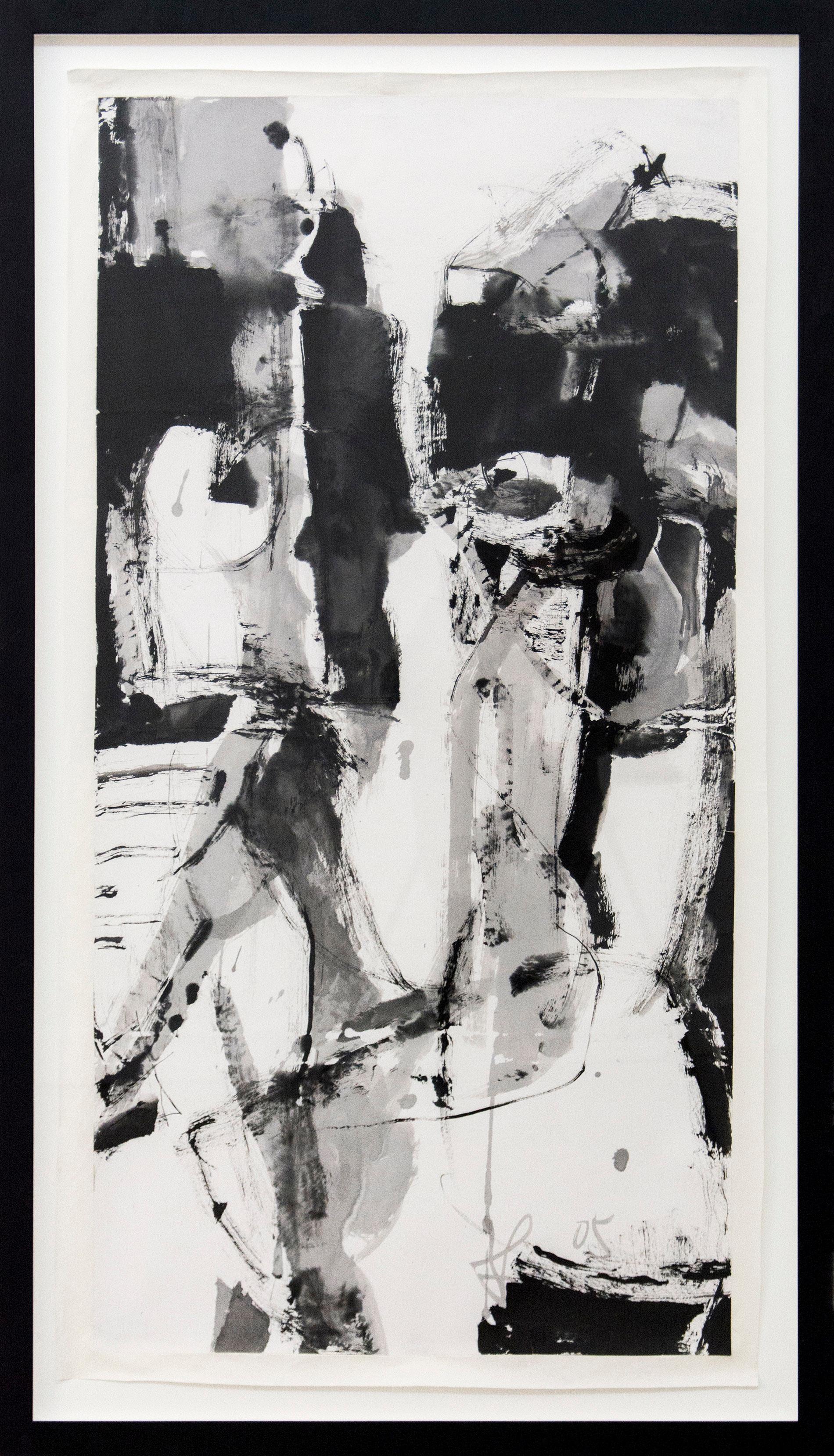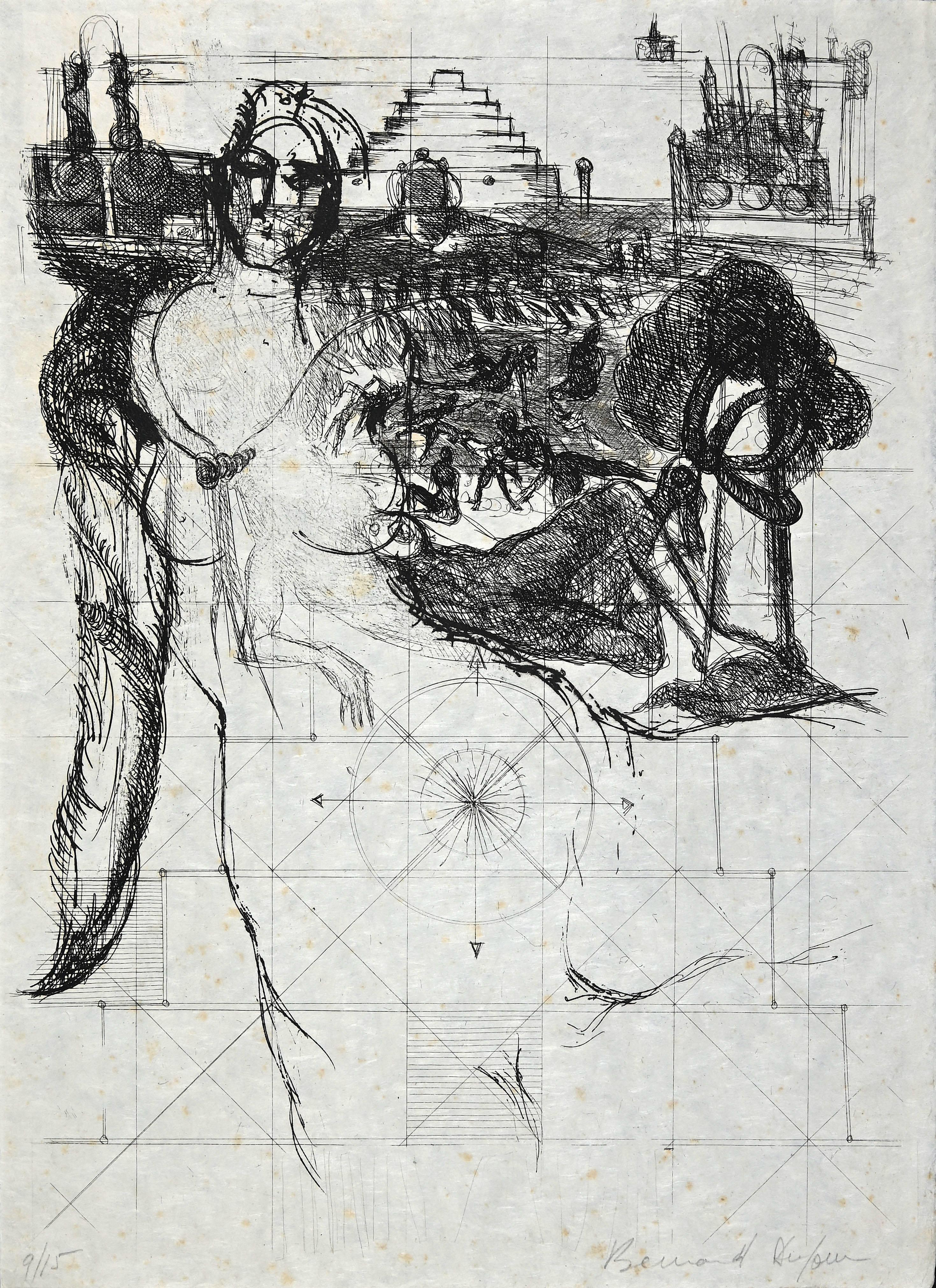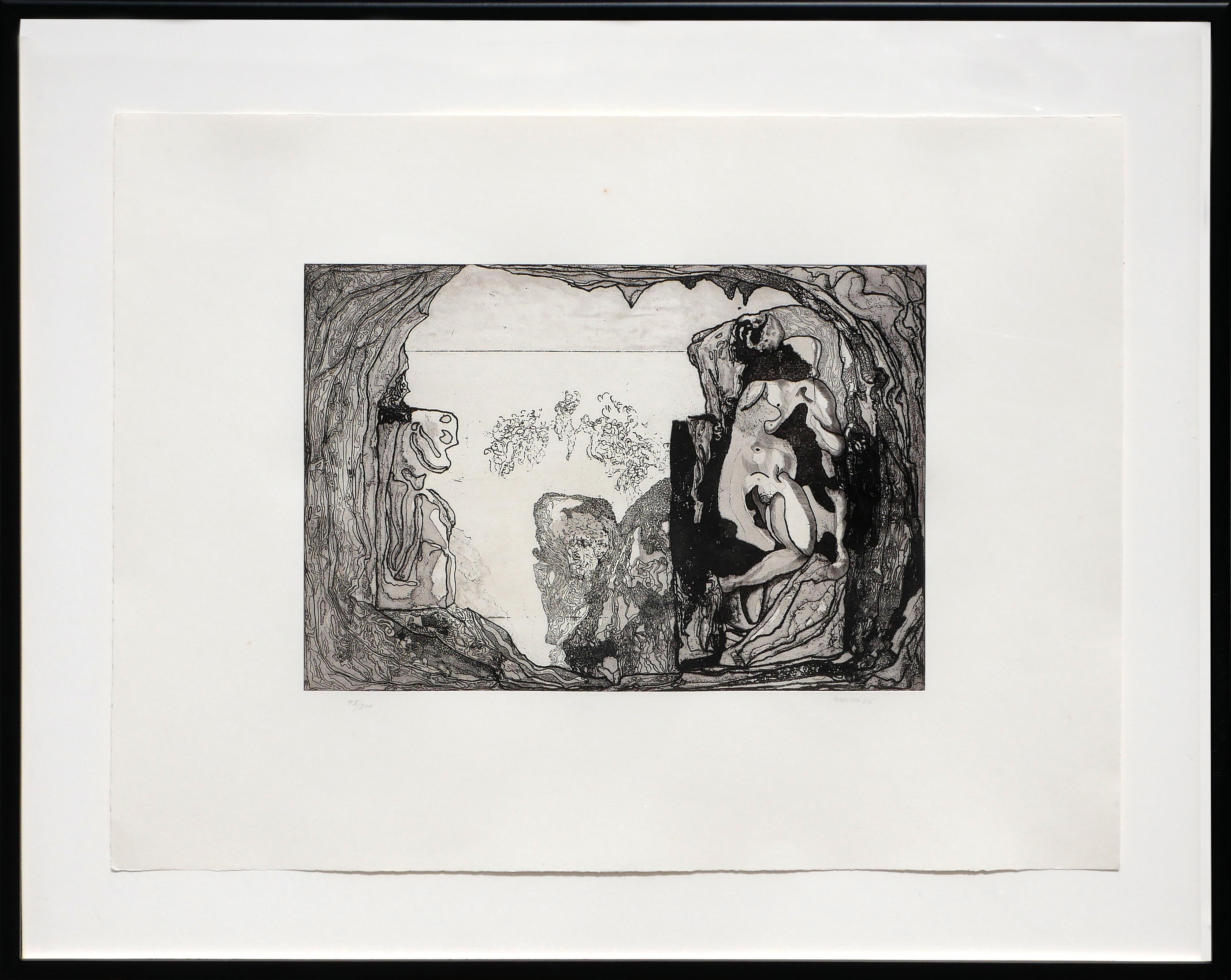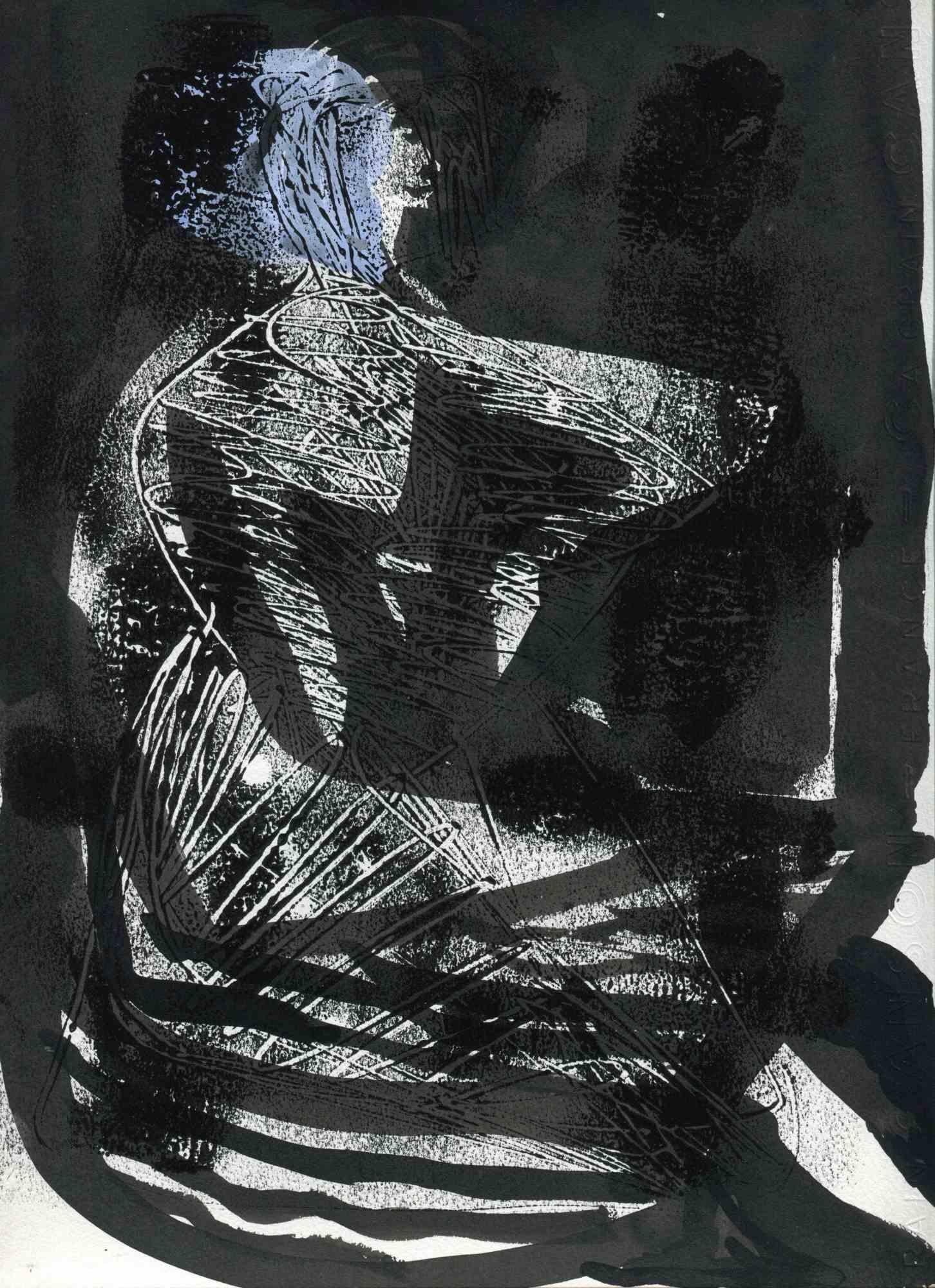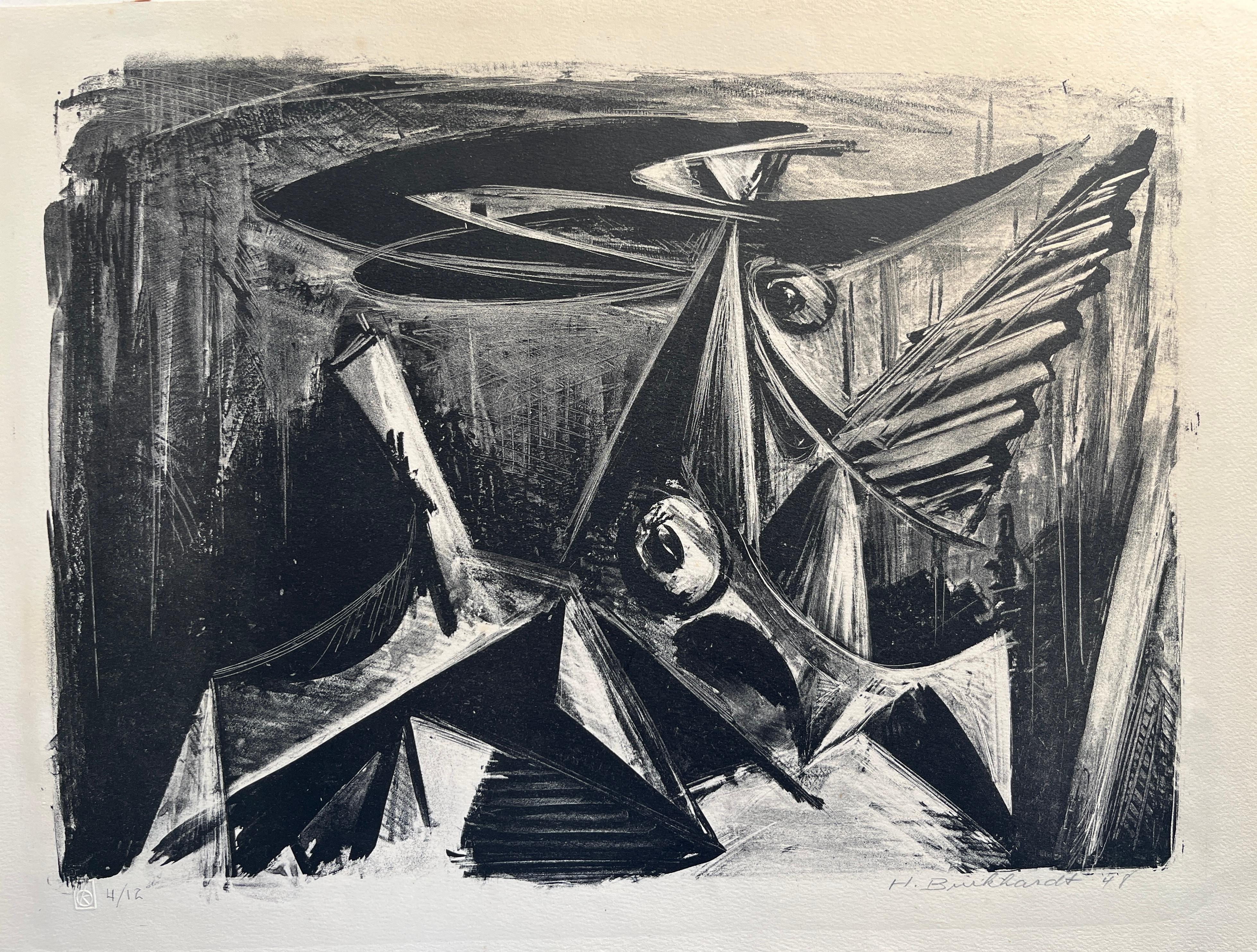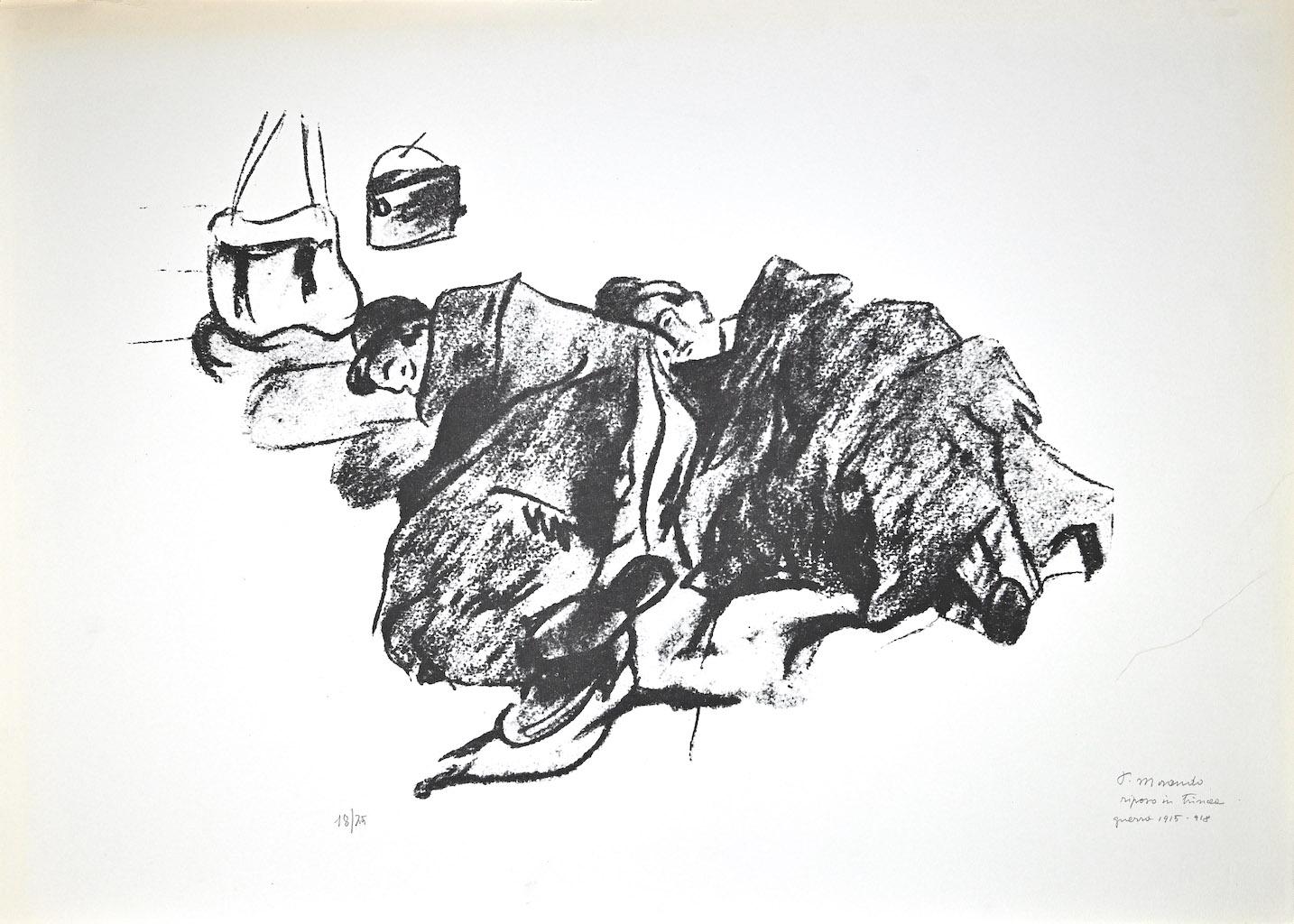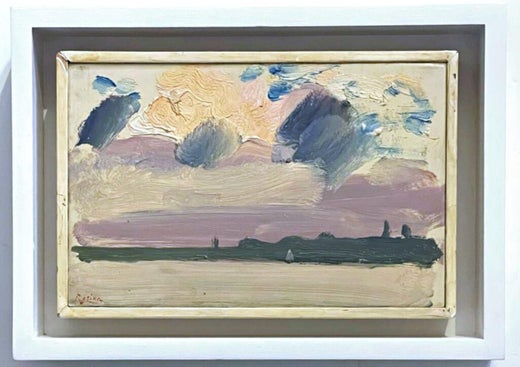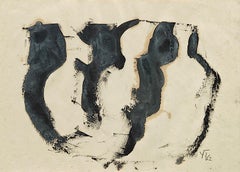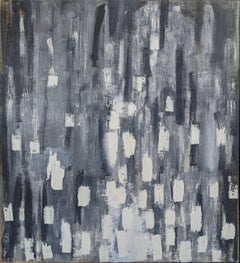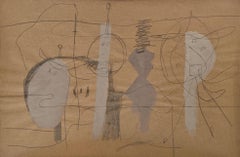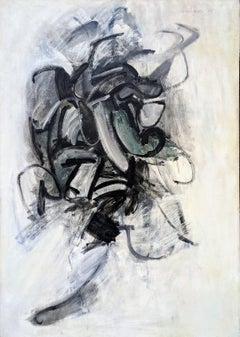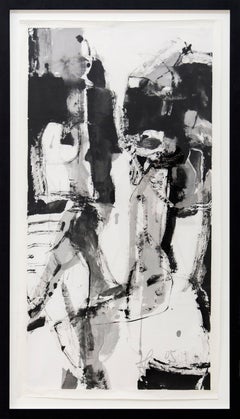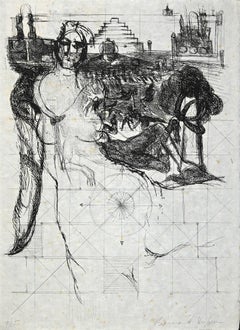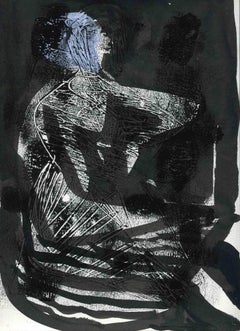Items Similar to "Untitled" Paul Resika, Modernist, Black and White, Abstracted Composition
Want more images or videos?
Request additional images or videos from the seller
1 of 7
Paul Resika"Untitled" Paul Resika, Modernist, Black and White, Abstracted Compositioncirca 1990s
circa 1990s
$1,500
£1,162.79
€1,316.19
CA$2,146.82
A$2,342.66
CHF 1,215.98
MX$28,027.92
NOK 15,434.64
SEK 14,457.43
DKK 9,831.47
About the Item
Paul Resika
Untitled
Signed lower right
Etching on wove paper
10 1/2 x 6 inches
Paul Resika (born 1928, New York, New York) is primarily recognized for his artwork featuring the distinctive forms of Provincetown. His artistic inspirations consist of Abstract Expressionism, Realism, and Impressionism. As a teenager in New York and Provincetown, he studied under Hans Hofmann before moving to Venice and Rome in 1950 to delve into the works of the old masters. After abandoning Hofmann’s abstract principles, he embraced a more subdued and descriptive Italian palette.
After his return to the United States, Resika increasingly focused on exploring light and color, merging abstraction with representation. Throughout his eight-decade career, Resika has showcased his work at locations such as the Peridot Gallery, Graham Modern, Long Point Gallery in Provincetown, Berta Walker Gallery in Provincetown, Hackett-Freedman Gallery in San Francisco, and Salander-O’Reilly Galleries in New York. He divides his time between New York and Truro, Massachusetts.
Resika’s creations are part of notable collections, including those at the Hood Museum of Art, the Metropolitan Museum of Art, the Museum of Modern Art, the Smithsonian American Art Museum, the Whitney Museum of American Art, and the Addison Gallery, among many others. He has received a Guggenheim Fellowship (1984) and has been honored as an Academician at the National Academy of Design (1978) and the American Academy of Arts and Letters (1994).
- Creator:Paul Resika (1928, American)
- Creation Year:circa 1990s
- Dimensions:Height: 23.5 in (59.69 cm)Width: 16.25 in (41.28 cm)
- More Editions & Sizes:Edition 13 of 15Price: $1,500
- Medium:
- Movement & Style:
- Period:
- Condition:
- Gallery Location:New York, NY
- Reference Number:1stDibs: LU1841216483442
Paul Resika
Paul Resika (b.1928-) is an abstract figurative and landscape painter whose paintings are meditations on nature. Notable for their geometric forms placed against a mixed palette of high-keyed and subdued color, Resika's paintings create striking oppositions between form, color, and light. Like the paintings of Bonnard, Resika's work encapsulates the hidden power of nature with its color and forms. Resika himself states that he strives to capture "a feeling for nature but without nature." His work blends the figurative with the abstract in such a way that one senses Resika's response to both his physical and interior worlds. Born in New York City, Resika studied with Hans Hofmann in the 1940s and received his first show at age nineteen, at New York's George Dix Gallery in 1948. He was part of what is now considered the second generation of the New York School—artists who applied abstract expressionist techniques, such as the emphasis on gesture and emotional immediacy to the depiction of representational subject matter. During the 1950s, Resika traveled in Europe and began developing the series of recurring pared-down, quasi-abstract motifs: piers and harbors, farmhouses, floral still lifes, female figures. The tradition of French modernist painting, specifically the work of Pierre Bonnard and the French Fauvist painters Matisse and Derain, is strongly evinced in his work. Currently Resika spends winters in New York City, summers i n Provincetown, Massachusetts, and one month each spring in southern France. Each locale and its accompanying season informs his work and plays an important role in his choice of subject matter and palette. Resika was elected to the National Academy Design in 1976 and to the American Academy of Arts and Letters in 1994. He has exhibited both in the United States and abroad. His works are included in the collections of the Metropolitan Museum of Art, New York, and the National Museum of American Art in Washington, D.C.
About the Seller
5.0
Platinum Seller
Premium sellers with a 4.7+ rating and 24-hour response times
Established in 2022
1stDibs seller since 2022
130 sales on 1stDibs
Typical response time: <1 hour
- ShippingRetrieving quote...Shipping from: New York, NY
- Return Policy
More From This Seller
View All"Untitled" Yvonne Thomas, Female Abstract Expressionist, Black and White Work
By Yvonne Thomas
Located in New York, NY
Yvonne Thomas
Untitled, 1962
Signed with initials and dated lower right
Oil on paper
8 3/4 x 12 inches
Yvonne Patricia Thomas, born in Nice, France, in 1913, immigrated to the Unit...
Category
1960s Abstract Expressionist Abstract Drawings and Watercolors
Materials
Paper, Oil
"Untitled" Calvert Coggeshall, Abstract Expressionism, Black, Grey, and White
Located in New York, NY
Calvert Coggeshall
Untitled, 1958
Oil on Canvas
38 H. x 36 W. inches
Provenance:
The artist's estate
Calvert Coggeshall worked as an abstract painter and interior designer primarily in Maine and New York City. From 1951 to 1978, he exhibited regularly with the Betty Parsons Gallery, and later with its successor, the Jack Tilton Gallery.
Born in Whitesboro, New York, Coggeshall started his career as an interior designer, working on commissions for clients in the New York City area. He later consulted on the interior designs for Henry Dreyfuss' line of cruise/cargo ships called American Export, popular from the 1940s through the 1960s. In the 1940s, he also worked with inventor Arthur Young to design interiors for the first full-sized scale of Bell helicopter models...
Category
1950s Abstract Abstract Paintings
Materials
Canvas, Oil
"Untitled" Perle Fine, Female Abstract Expressionist, Gray and Black Forms
By Perle Fine
Located in New York, NY
Perle Fine
Untitled, circa 1945
Estate stamped and numbered "#632" on the reverse
Gouache and pencil on Kraft paper
12 x 20 inches
Provenance
The artist
Estate of the artist
Thomas McCormick Gallery...
Category
1940s Abstract Expressionist Abstract Drawings and Watercolors
Materials
Paper, Gouache, Pencil
"Study C60, " Ted Kurahara, Abstract Expressionism, Japanese-American Artist
By Ted Kurahara
Located in New York, NY
Ted N. Kurahara (b. 1925)
Study C60, 1960
Oil on canvas
70 x 50 inches
Signed and dated upper right corner
Artist label verso: TED N. KURAHARA STUDY C60, OIL PTG 1960 70” x 50” 800
Ted Kurahara works in a minimal style that transforms color planes into infinite depth. Following his upbringing Seattle and time spent in an Internment Camp before serving in the 442nd, a highly decorated Japanese American...
Category
1960s Abstract Expressionist Abstract Paintings
Materials
Canvas, Oil
"Untitled" Mary Abbott, Abstract Expressionist Collage, Ninth Street Women
By Mary Abbott
Located in New York, NY
Mary Abbott
Untitled, circa 1953
Signed with initials lower right
Oil and torn paper collage
17 x 14 1/2 inches
Provenance:
Thomas McCormick Gallery, Chicago
Private Collection, New York (acquired directly from the above)
Exhibited:
Athens, Georgia, Georgia Museum of Art, Suitcase Paintings...
Category
1950s Abstract Expressionist Mixed Media
Materials
Paper
"Untitled" Theresa Bernstein, Expressionist Work by American Ashcan Artist
By Theresa Bernstein
Located in New York, NY
Theresa Bernstein
Untitled, circa 1990
Signed lower right
Oil on canvas
16 x 20 inches
Theresa F. Bernstein was born in Philadelphia in 1895 to cultured, middle-class immigrant par...
Category
1990s Abstract Abstract Paintings
Materials
Canvas, Oil
You May Also Like
Citation - black, white, abstracted figurative, brushed ink on paper
By Andrew Lui
Located in Bloomfield, ON
Brushed ink in grey and black leads the eye up the picture plane in this 55-inch tall painting on paper. The intense movement suggestive of rearing horses in this painterly work is in keeping with Lui's theme of pilgrimage in which he explores the idea of "self-inflicted happiness" as a deliberate response to the melancholy and complexity of life. This painting is floated and framed. Framed Size: 60 × 35 inches
Born in Guangzhou, China, Lui participated in the Chinese Cultural Revolution as a member of the Red Guard 1968-70 and then escaped to Hong Kong by swimming. Making his way to Toronto he studied at the Ontario College of Art and became a citizen in the late 1970s. He continued studies in the UK, and Italy where he was drawn to the dynamic Uccello's Battle of San Romano...
Category
2010s Contemporary Abstract Drawings and Watercolors
Materials
Ink, Archival Paper
Untitled - Etching by Bernard Dufour - Late 20th century
By Bernard Dufour
Located in Roma, IT
Hand signed and numbered.
Edition of 15 prints.
Good condition but diffused foxing.
Category
Late 20th Century Contemporary Abstract Prints
Materials
Etching
Black and White Abstract Figurative Etching Edition 98/200
By Jorge Castillo
Located in Houston, TX
Monochromatic abstract figurative etching by Spanish painter Jorge Castillo. The piece depicts an abstract landscape overlooking an empty view from what appears to be a cave. Figures...
Category
1970s Abstract Abstract Prints
Materials
Etching
Figure - Original Lithograph - Mid-20th Century
Located in Roma, IT
Figure is an original lithograph on paper realized by an anonymous artist of the mid-20th Century.
In very good conditions.
The artwork created through confident strokes, short and...
Category
Mid-20th Century Modern Figurative Prints
Materials
Lithograph
Untitled
By Hans Burkhardt
Located in New York, NY
Lithograph, 1948. Signed by the artist and dated in pencil, lower right. Numbered 4/12 in pencil, lower left.
Category
1940s American Modern Abstract Prints
Materials
Lithograph
The Rest - Original Lithograph by Pietro Morando - 1950s
By Pietro Morando
Located in Roma, IT
The Rest is an original artwork realized by Italian artist Pietro Morando (Alessandria 1889- 1980).
Original Lithograph.
Hand-signed on the lower right in pencil, titled.
Numbered...
Category
1950s Modern Figurative Prints
Materials
Lithograph
More Ways To Browse
Dali Immaculate Conception
Dali King David
Dali Litho
Dali Lithograph Cosmos
Dali Lobster
Dali Logician Devil
Dali Marguerite
Dali Obsession Of The Heart
Dali Playing Cards
Dali Purgatory 4
Dali Shakespeare
Dali Shoes
Dali Sodomites
Dali Statue
Dali The Golden Age
Dali Woodblock
Daumier Etchings
David Hockney 1984 Olympic
